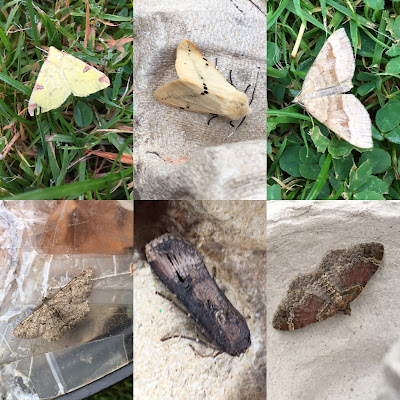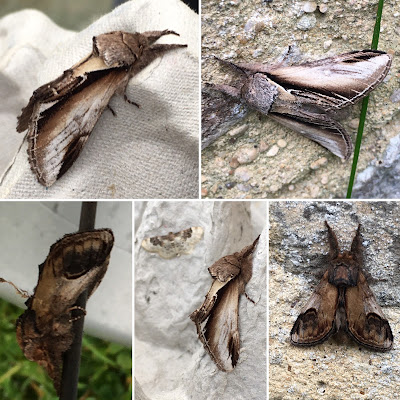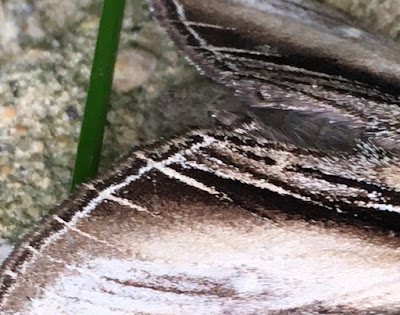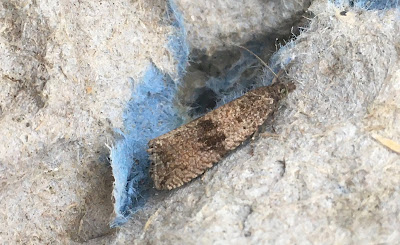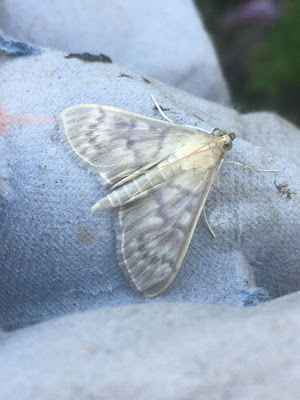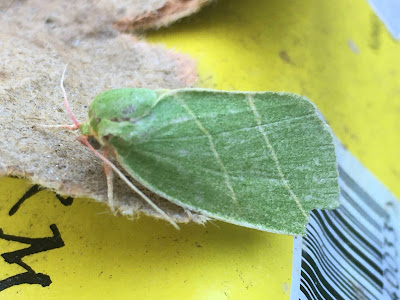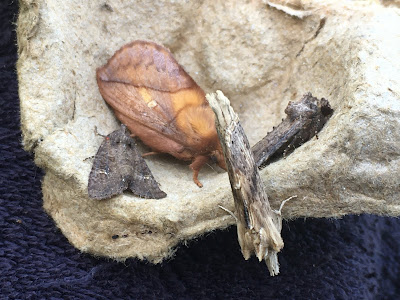Plenty of moths around at the moment - and, as so often happens, a couple of hawk moths obligingly came yesterday when a friend's granddaughters called by. One went away with an Elephant Hawk on her fingertip, the other with a Poplar Hawk. My top composite shows, from the top left clockwise: Brimstone, Buff Ermine, a rather faded Lead Belle (Update: Edward in Comments questions this, I think rightly. I wonder if it is a worn Shaded Broad-bar, a very common moth hereabouts at the moment), Red Twin-spot Carpet, Dark Swordgrass (a strong-flying immigrant recorded in every month of the year) and Willow Beauty.
This collection are prominents, the Lesser Swallow Prominent at top left and bottom centre with its large white rose-thorn shape, the Swallow Prominent top right with its white streaks, and two Pebble Prominents to left and right in the bottom row. Here are the diagnostic markings of the Swallow and Lesser Swallow writ large (Update: and thanks again to Edward for getting my order right):
Away from the moths, I will shortly be testing the experts at iRecord with these three grasshoppers, the last one found by one of my grandsons, and a moth trap-inhabiting snail. Update: Conehead has done the job instead in Comments - very many thanks - suggesting that the first is probably a Field Grasshopper, the second definitely a male Meadow Grasshopper and the third a Southern Oak Bush-cricket, pointing out the difference - crickets have long antennae which grasshoppers lack. With my yearning to have antennae, I hope I will be born again as a cricket rather than a grasshopper.
